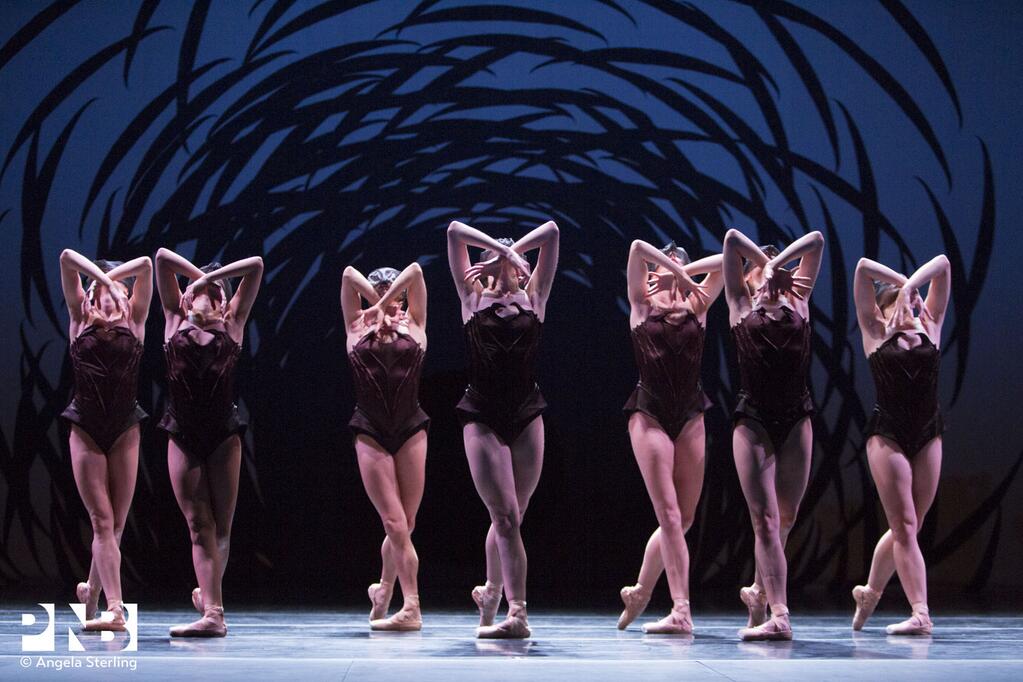 I hardly know where to begin talking about Pacific Northwest Ballet’s latest rep, Kylian + Pite, but I’m afraid that once I start, I won’t be able to stop. Like my recent experience with Ólafur Arnalds and Nils Frahm at Decibel Festival, this performance forced me to reconsider the very definition of one my favorite art forms.
I hardly know where to begin talking about Pacific Northwest Ballet’s latest rep, Kylian + Pite, but I’m afraid that once I start, I won’t be able to stop. Like my recent experience with Ólafur Arnalds and Nils Frahm at Decibel Festival, this performance forced me to reconsider the very definition of one my favorite art forms.
The rep includes three pieces from choreographer Jiri Kylian and one from Crystal Pite. Kylian was born in Prague, but has worked with Netherlands Dance Theater since the 70s. Pite is Canadian, and currently runs her own touring company, Kidd Pivot.
All four dances explored the relationship of the individual to the group – the way individuals combine to form a whole, and the sometimes ludicrous ways they preserve individuality within it. The power in these pieces was not limited to the concept. I’m familiar with the vocabulary of contemporary ballet, but Kylian and Pite are speaking a different language; the dances consisted almost entirely of movements I’ve never seen before.
Petite Mort
With a name like “Petite Mort” and with costumes resembling corseted undergarments, I was expecting something sexy. But it wasn’t, or at least not in the way a dance like “Romeo and Juliette” is sexy. The men dance playfully (but not suggestively) with swords, and women float across the stage encapsulated in baroque gowns. They aren’t actually wearing the ultrafeminine dresses; these symbols of gender are overlain on dancers who do not always comply with the form such props would impose. In fact, throughout all of the dances, traditional gender roles are disregarded. Dancers are cross-costumed and even cross-danced.
Forgotten Land
In the “Forgotten Land” pas de deux the man and woman are not dancing in partnership, they are dancing in unison. When a second couple joins them, they partner up, the new man supporting the first man and the new woman supporting the woman from the pas de deux.
Sechs Tänze
“Sechs Tänze” (Six Dances) is performed to Mozart’s sometimes sparkling, sometimes foreboding music of the same name. Wearing heavily powdered wigs, the dancers scoot and scuttle around the stage like poorly controlled puppets that somehow simultaneously convey the contrived mannerisms of courtiers. I couldn’t help but think of the ridiculous character played by Tom Hulse in the movie Amadeus when a cloud of powder emerged from the dancers’ heads each time they moved. I also had to think of myself, ridiculously fighting my hair with dry shampoo and a paddle brush only an hour earlier in an attempt to look presentable at the ballet. Engaged in such nonsensical adventures, the dancers willfully ignore the changing atmosphere of the music, continuing to focus on their petty escapades until they can no longer ignore reality offstage – at which point they run away in horror.
Kylian was my new favorite choreographer, but it only lasted until the third act.
Emergence
Set to Owen Belton’s acoustic/electric score that has been described as industrial, but could just as easily be neoclassical, “Emergence” began with a white chrysalis on a black stage. It began to move, just as I remembered seeing them do at the butterfly farm in Costa Rica. But no, it was only a pale-skinned dancer in white, lying on the floor and rotating her shoulder.
Drawing from a variety of dance traditions and from nature itself to generate insect-like movements, Pite’s dancers explored the role of hierarchy and individual choice in the development of social structures. The men’s fluid turns and swirls reveal the seductive nature of hive mind conformity. Then the arrival of a militaristic wall of women en pointe and counting time reminds you of the terrifying risk inherent in giving up autonomy. The women sweep the men toward the side of the stage; the men regroup, send suicide missions to face the wall until one brave drone pulls the line into an arrowhead shape. The line breaks up and new groups are formed.
One of the most beautiful sequences in “Emergence” (or ever) involves four men in black fatigues. Except one of them is a woman. I can’t even say why this piece is so moving. I could argue that the small group moving in harmony but not in unison, where the woman is on completely equal footing with the men represents an ideal, a perfect balance of peace and individual expression. But I’m not sure it has anything to do with that.
The Newness
They say there’s nothing new under the sun, that all creativity is just rearranging the elements of what others have done before you. I enjoy identifying the references and sources when I watch a movie or read a book. Of course it’s impossible to be completely new – dance is still limited by the shape of the human body. Of course Pite builds on training and influences – Kylian is an obvious one – that are broader than my experience. But in Pites’ choreography, something genuinely new has emerged.







About the author